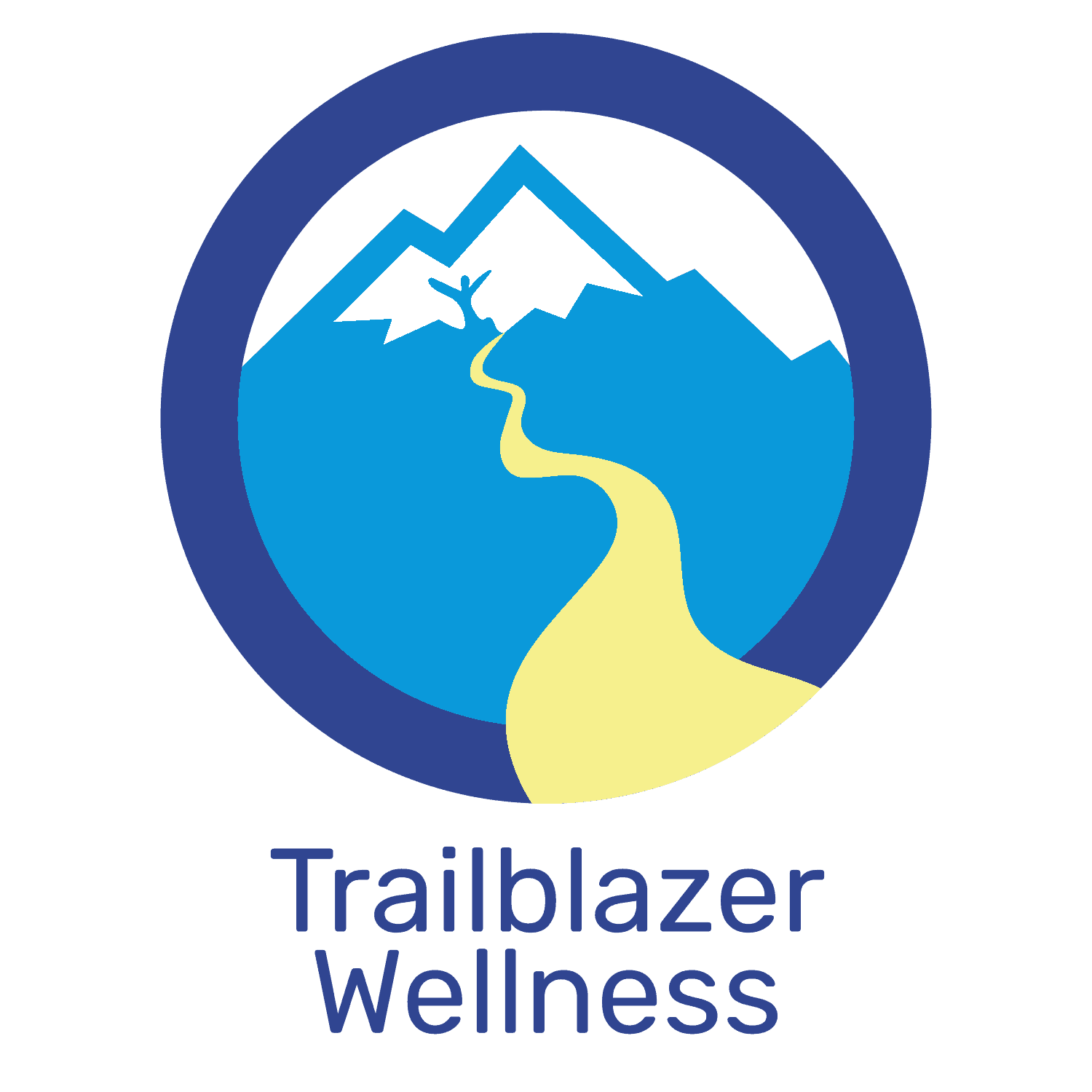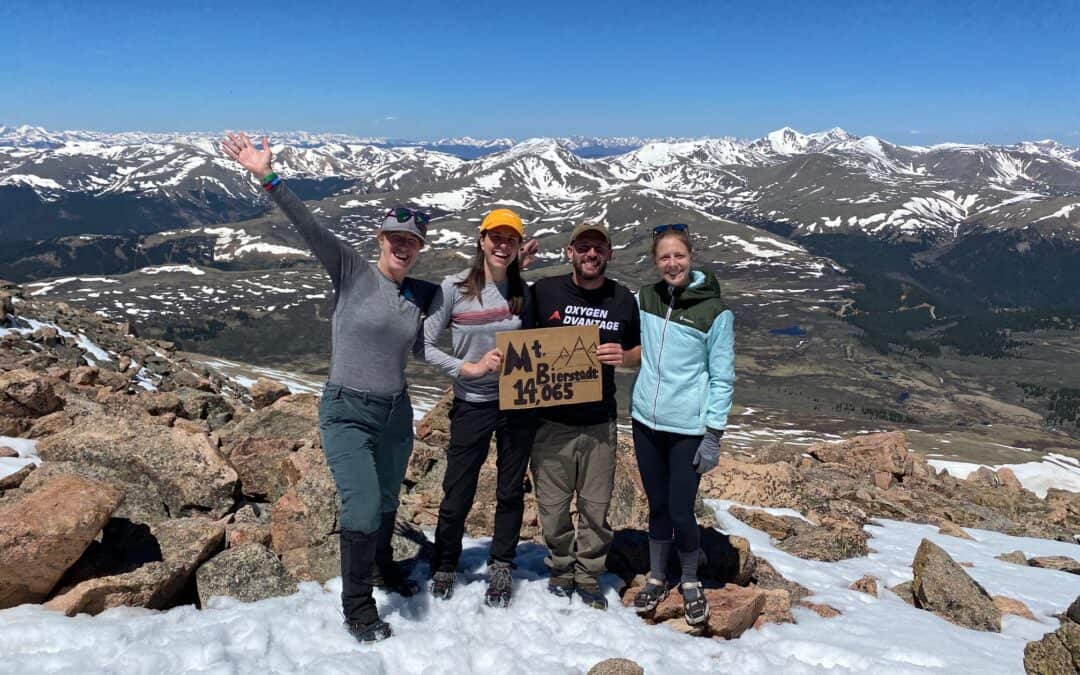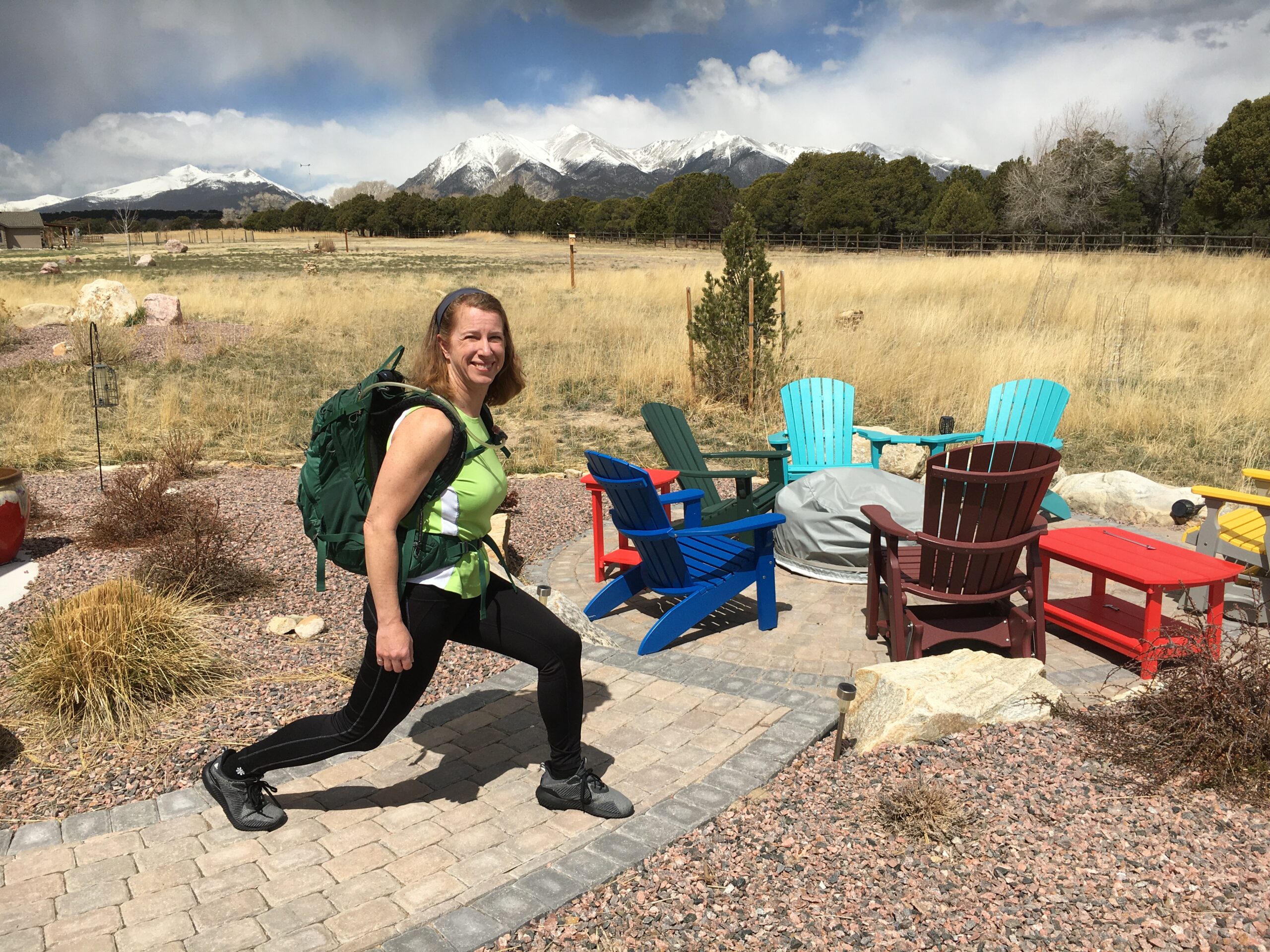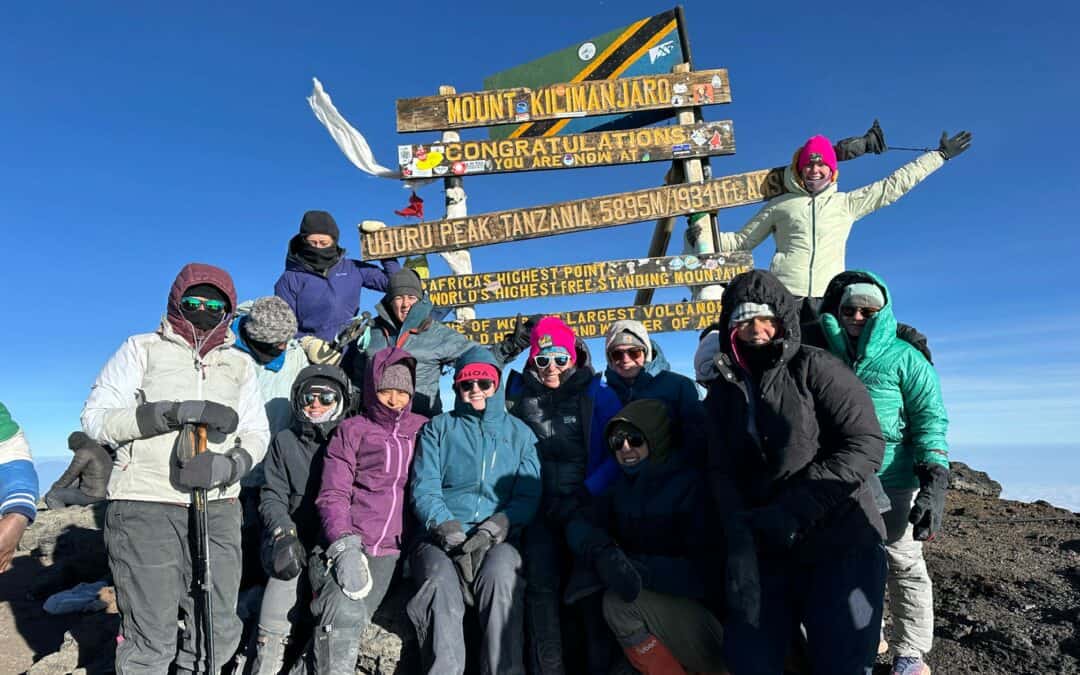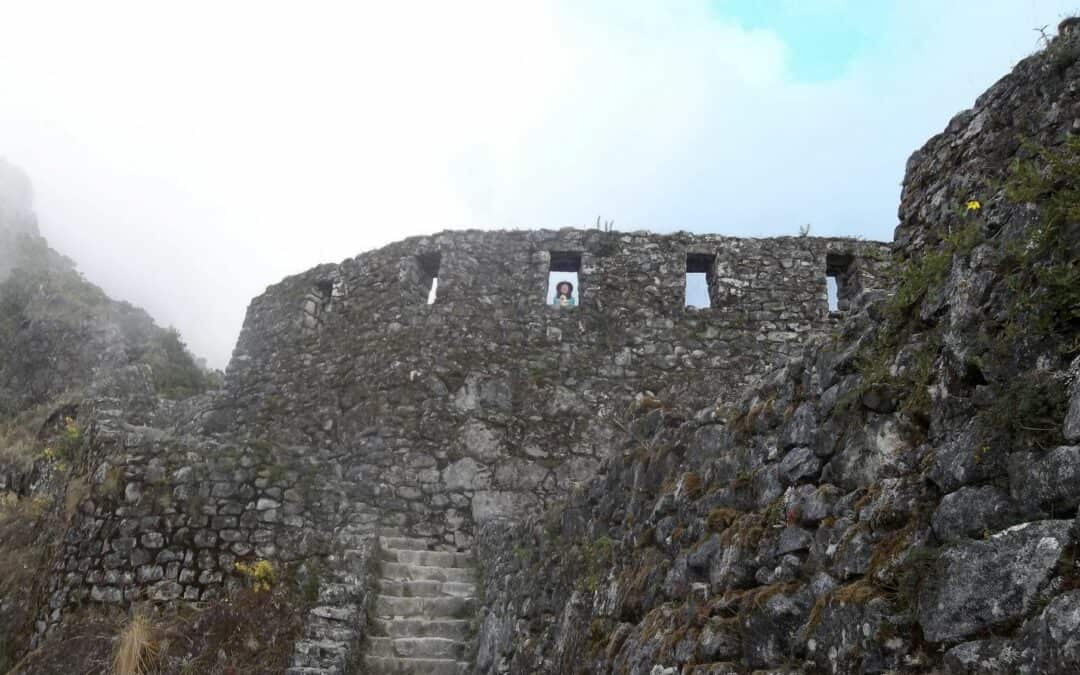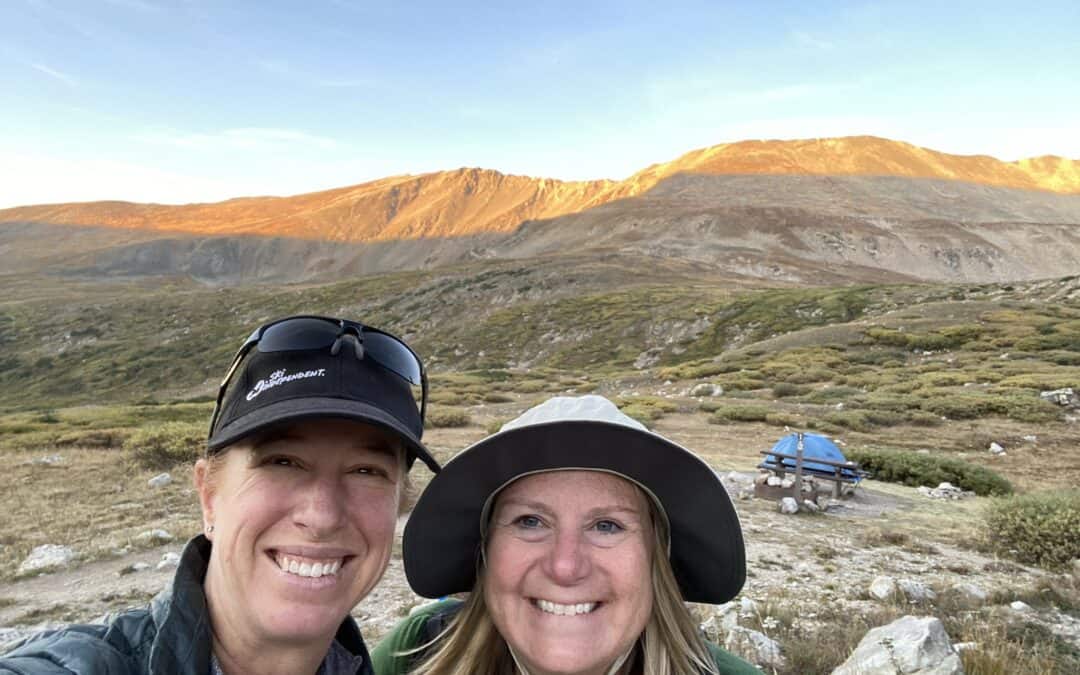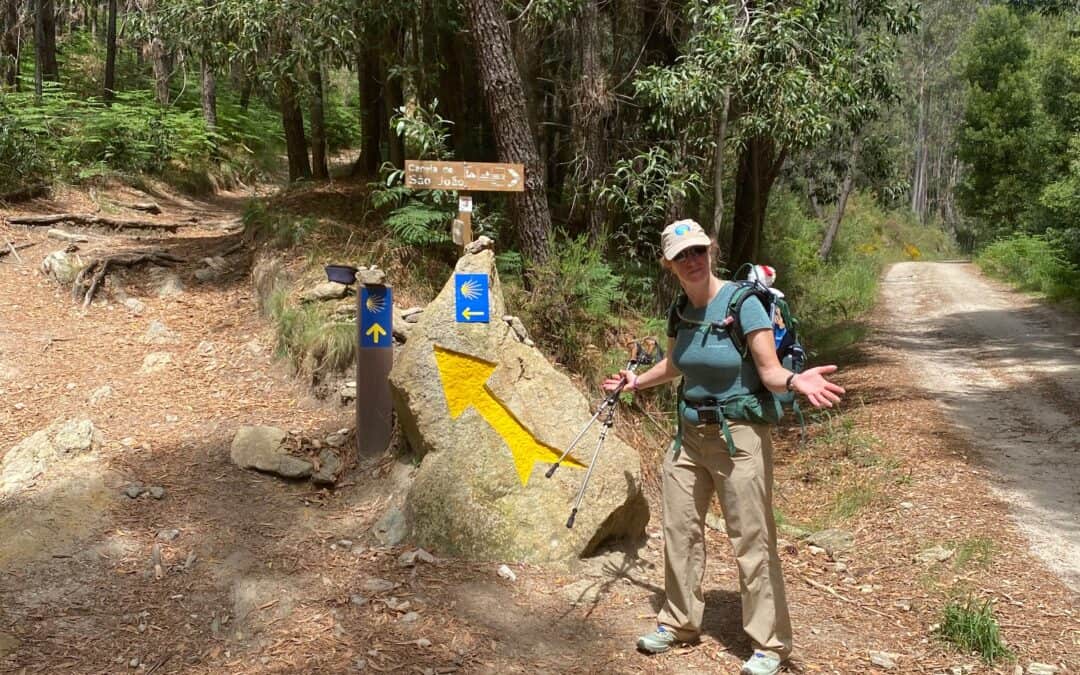
6 Steps of Training for Walking the Camino de Santiago
Whether you’ve already booked your trip to walk the Camino de Santiago, or been dreaming about doing it, you might be wondering how to prepare for it. After all, walking many miles day after day is a significant undertaking for most people!
Yet thousands of people complete a version of the Camino de Santiago each year. It’s an adventure that’s within reach for many, since it doesn’t require special skills or equipment. It can still be a challenge physically and mentally, though.
Investing some time and thought into preparing for your Camino journey can definitely make it a more enjoyable experience. When my husband and I walked the Camino Portuguese from Porto, Portugal, to Santiago, Spain, in May 2022, we focused on specific training activities for about 3 months before we went.
If you’re looking for a specific training plan to follow, check out my “Camino de Santiago Training Package.” It includes a 3-month training plan, as well as videos about how to prepare, and weekly emails with tips and insights to guide you in your pre-trip journey.
As you may know, there are many routes for the Camino de Santiago. The French Way, which starts in western France and goes across northern Spain to Santiago, is probably the best known and most popular.
The Camino Portuguese has become more popular recently, including its Coastal route and Inland route from Porto through northwestern Portugal and southwestern Spain up to Santiago.
Several other routes exist, and they each have their own charms and challenges. There are also different logistical approaches to walking the Camino that impact how to prepare.
Some variables include:
- The route’s terrain, including elevation changes (how hilly it is) and the types of surfaces you’ll encounter (tarmac, cobblestone roads, dirt roads, rocky trails, etc.).
- The range of distances you plan to cover each day. For example, my husband and I walked 8-15 miles (12-25 kilometers) per day. Some people average more, 15-20+ miles (25-35+ kilometers) per day.
- How much you’ll carry with you. Some people use luggage transfer services to take a bag with extra clothing, toiletries and other items to their next lodging, while carrying a light day pack as they walk. Others carry everything with them in a larger backpack.
- The lodging you choose. Some people stay at full-service inns and hotels. Others stay at hostels or albergues, so they may chose to bring their own sheets and towels.
The fundamentals of preparing physically for the Camino de Santiago are pretty much the same, though. Based on our experience, as well as coaching many clients who have completed various versions, here are the 6 steps of training for walking the Camino de Santiago.
1: When to Start Training
The first thing to figure out is when you want to start focused training on preparing for the Camino.
The variables to consider for this are:
- Your itinerary, including the route’s terrain, the range of distances you plan to cover each day, and how much you’re going to carry as you walk.
- Your current activity level compared to trip activity level.
- The amount of time you have available (or can adjust your schedule to make available) for training.
For example, my husband and I planned to walk 8-15 miles per day on the Camino. The terrain of the Portuguese Inland route is hilly, with one day of hiking over 1,000 feet of elevation change. We planned to use a luggage transfer service, so we’d be carrying day packs with water and snacks, rain jackets, and a few other essentials (headlamp, first aid kit, etc.).
Our activity level at the time was walking 2-3 miles most weekdays, hiking 3-6 miles on a weekend day, on hilly routes near our home.
Our schedules were pretty flexible and open enough to add more training time as needed.
That put us in the category of having a solid base of activity relative to our itinerary. And we had enough time to increase our mileage gradually over a few months to get closer to the mileage we’d be doing on the Camino.
My clients often have different equations. Some have a more challenging itinerary – more mileage and/or more elevation change.
Some have time constraints, including working a demanding job and/or other responsibilities that limit their time to train.
Others have a bigger gap between their current activity level and their itinerary.
If you know of, or anticipate, challenges such as a big gap between your current activity and the itinerary, limited time, or other restraints, then add several weeks or even months to your training plan. I recommend starting 3 months ahead of your trip, and adding on to that based on your situation.
If you want more detailed guidance on this, check out my webinar “When to Start Training for Your Adventure.” Or set up a free 30-minute consultation with me to talk through it.
2: Building Stamina
The key to building stamina for the Camino is adding more activity gradually over time. You can’t cram or rush stamina. It’s a pretty standard equation, actually. Adding 10-20% to your total distance each week helps your body adapt to going longer distances.
Pushing to do more than that increases your risk for overuse injuries, and/or being miserable.
For example, my client Chris (name changed for anonymity) walks 2-3 miles per day 5 days a week. That’s 10-15 miles total. So the first week of training, I’d recommend adding 1.5-2.5 miles total. Chris can do that by adding a half-mile to each of her daily walks, or extend one walk by 1-2 miles, or extend two of the walks to 4 miles.
A similar rule of thumb applies to adding elevation gain and adding load (how much you’re carrying). Adding to these factors gradually gives your muscles a chance to recognize the additional demand and respond by getting stronger.
With elevation gain, I suggest adding in increments of about 500 feet (~150 meters) per week. For those who live in flat places – my friends in Florida and parts of the Midwest – a treadmill can come in handy. Stairs are another great tool for simulating elevation change, especially going down, which uses your muscles differently than going up.
For load, I usually suggest clients start with a “light pack” that includes 1-2 liters of water and snacks. Then after a few weeks, have them add in items they’ll be carrying in a day pack on the Camino.
For those who are carrying everything (no luggage transfer), I’d recommend adding the rest of the items they plan to take after a few weeks of carrying the “day pack” load.
The training plan I created for the Camino de Santiago Training Package includes the suggested mileage for each week for 3 months before starting the Camino.
3: Train on Varied Terrain
Each Camino de Santiago variation has a different mix of terrain. The thing they have in common is that they all have a mix of surfaces – paved roads, cobblestone roads, dirt roads, rocky trails, smooth dirt paths, and more.
You should be able to find out the approximate percentages of each type based on the route you plan to do.
Your training doesn’t need to exactly mimic the mix of terrain, though. It can be helpful to include a variety of surfaces during your training since each type does impact your body – especially your feet – differently.
Those who primarily walk on dirt paths should add in some paved road or path walking. The harder surface doesn’t absorb as much of the force on your feet and legs. And those who mostly walk on pavement should seek out some dirt roads to feel the variability.
If you have access to a cobblestone road, walk on that a bit – for some people, this is the most challenging surface due to how uneven it is.
Getting some time on rocky and rooty trails can be helpful too. You’re likely to do more side stepping and have your feet roll differently due to the obstacles.
4: Back-to-Back Longer Days
As my clients get closer to their Camino experience, within a month of their departure, the training plan includes a few weeks with 2 longer days of walking. Depending on their itinerary, that could be one day of 6-8 miles and one of 8-12 miles.
I recommend that they do these longer days back-to-back. The second day can be very telling – what is sore, what rubs the wrong way, what’s their energy level. If you haven’t eaten enough or drank enough water on the first day, the second day can be especially tough.
The second day can be a mental test too. Are you excited for another day of walking? Apprehensive? How do you feel by the end of day 2? What might make a difference for you next time?
Doing a couple of back-to-back day sets is usually enough to figure out what challenges to anticipate on the Camino, and how you might handle them.
5: Strength Training for the Camino
You may have heard or read that for a long distance walk like the Camino you just have to do squats and lunges to get your legs strong. Yet walking and hiking is really a full-body experience, especially when you’re carrying a pack!
Pack weight can be variable on the Camino, depending on if you’re going to be carrying a day pack versus a full pack. If you’re doing the Camino through a company where they’re transferring your luggage, then you only have to carry a day pack. That’s how my husband and I did it. We had just our day packs on, and then we had our luggage transferred to our lodging each day.
Some people do carry a full pack with everything they need for their Camino, including all of their clothing, toiletries, and possibly some bedding. If you’re doing this, you’ll definitely want core and upper body strength as well as leg strength!
Here are a few reasons for building full-body strength:
- More comfortable carrying additional weight.
- Reduce risk of injury, because stronger muscles are more resilient.
- Build endurance for longer days of being active.
The workouts I set up alternate between upper body, core and lower body, so that you’re rotating through the muscle groups. That way you can rest one part of your body while you’re working another part. It’s a very efficient way to do strength training so that you can keep moving, and you can work most muscle groups in 25-30 minutes.
Another thing that I incorporate into the strength training is horizontal or lateral movement. Walking is usually pretty straightforward. Doing lateral movements reinforces your other muscle groups around your hips to support you.
The training plan I created for the Camino de Santiago Training Package includes 4 full body strength workouts to use as you prepare for the Camino.
6: Testing Your Camino Gear
One of my clients said every walk or hike is a gear testing opportunity. I totally agree. When you’re going to be spending a week or more wearing pretty much the same thing, test out as many combinations as possible before you go.
It’s amazing what a difference it can make in your comfort. Bad gear can make what otherwise would be a good day, a really miserable day. And good gear can make a bad day more comfortable. There are lots of options out there. There are also lots of preferences, so find what works best for you.
Rain Gear
The northwest part of Spain is known as being pretty rainy. If you’re familiar with the Pacific Northwest, it’s kind of a similar climate. Those storms come across the Atlantic, and they just roll right into Portugal and western Spain.
So testing your rain gear is key! Some people wear a rain jacket only, some use a poncho, some wear rain pants as well. Whatever your preference is, get out there on at least one rainy day and see how well it holds up.
If you live in a dry climate and don’t have a rainy day opportunity, put on your gear and stand in the shower for at least a few minutes!
Trekking Poles
For this adventure, I’d say using trekking poles is a personal preference. Less than half the people we saw were using them. My hubby and I did use hiking poles on the Camino, though honestly we would’ve been fine without them.
If you’re going to bring trekking poles, use them at home first to get comfortable with the cadence. For more on trekking poles, check out “4 Reasons to Use Trekking Poles.”
Backpack
You definitely want to test your pack. I encourage people to wear their pack on their longer training walks, and even some of the shorter walks or hikes during the week too. You don’t have to wear it on every single walk, though.
If you don’t have a lot of experience with backpacks, go to your local outdoor store. The staff should be able to help you find one that fits well and get it adjusted. Many packs have adjustments to make sure it fits nicely on your back and your shoulders.
We saw just about every type of backpack on the Camino. Everything from the little shoestring “flash pack” style, to what my husband and I wear, to full multi-day backpacks.
Your pack size depends on how much you plan to carry with you from day to day, and what is comfortable for you. I like packs that are more sturdy and substantial, with good padding on the shoulders. I prefer to have a hip belt, which helps support the weight, plus I like pockets in the hip belt for lip balm and sunscreen.
I suggest having a pack that will carry at least:
- Rain gear – jacket or poncho, and pants if you tend to get cold
- Light fleece or other top, if you’re walking in the spring or fall and it gets cool
- Snacks
- 2-3 liters of water (either in a water bladder or in water bottles)
- Extra pair of dry socks
- First aid kit, especially with blister prevention and treatment stuff
- Headlamp (just in case you get delayed!)
- Sunscreen and lip balm
- A hat (if you’re not wearing it)
- Toilet paper!
- Battery pack to charge your phone, especially if you’re using its GPS for navigation
You might also get a packing list from the company you’re using to support your Camino journey, or there are lots of lists online from experienced Pilgrims.
Aim to find that sweet spot of having enough space that if you want to stuff a couple more things in, you can, but it’s not so big that your stuff is flopping around in there. It might take a little experimentation.
Then there are the things that, if you have luggage transfer, you can keep in your regular luggage. This will probably include a few more changes of clothes, toiletries and other “comfort” items like a foot massager or slippers!
Footwear and Socks
A big topic of discussion for the Camino is footwear and socks. Actually, they go together, and you should wear them together when you’re training, because it’s the combination that makes a difference.
On the Camino, we saw everything from full leather, ankle-high hiking boots, which frankly, I think is overkill, to sandals.
We had heard from several people that with the mix of terrain, as well as the weight of your pack, trail runners should be fine. We went with that approach, which includes a bit more sturdy sole than a basic running shoe.
Just remember your feet are what you’re moving around for hours and hours and hours. So the weight that’s on your feet is what you’re lifting with each step.
Some things to consider:
- How much support do you feel comfortable with for your ankles?
- How much grip do you want on the bottom?
- What materials do you prefer for the upper part of the shoe?
I usually recommend to people that they start trying shoes out two to three months beforehand. That gives you a chance to like wear them for several walks and test to see how they feel. And if you decide they don’t work, you still have time to switch!
If you find a pair that work really well for you, consider buying another pair. Because by the time you do your training and you do the whole walk, you might wear them out!
Another thing some people do, and especially people who have luggage transfer, is bring 2 pairs of shoes. So you can alternate if you don’t want to wear the same shoes every day.
Worried about making mistakes in your training? Get my free “Top 11 Training Mistakes + How to Avoid Them” quick reference guide!
It’s Your Camino – Do It Your Way
As you may have figured out by now, there are lots of variables on the Camino de Santiago. One of my favorite sayings from the Camino experience is “Everyone walks their own Camino.”
You can do it at your pace, in as long or short segments as you want, with as much or as little logistical support as you want, and with whatever mindset you want. There’s no “right” or “wrong” way – that’s part of what makes it magical.
Buen Camino!
To learn more about getting a customized training plan and ongoing coaching support for the Camino de Santiago, set up a 30-minute free consultation call.
